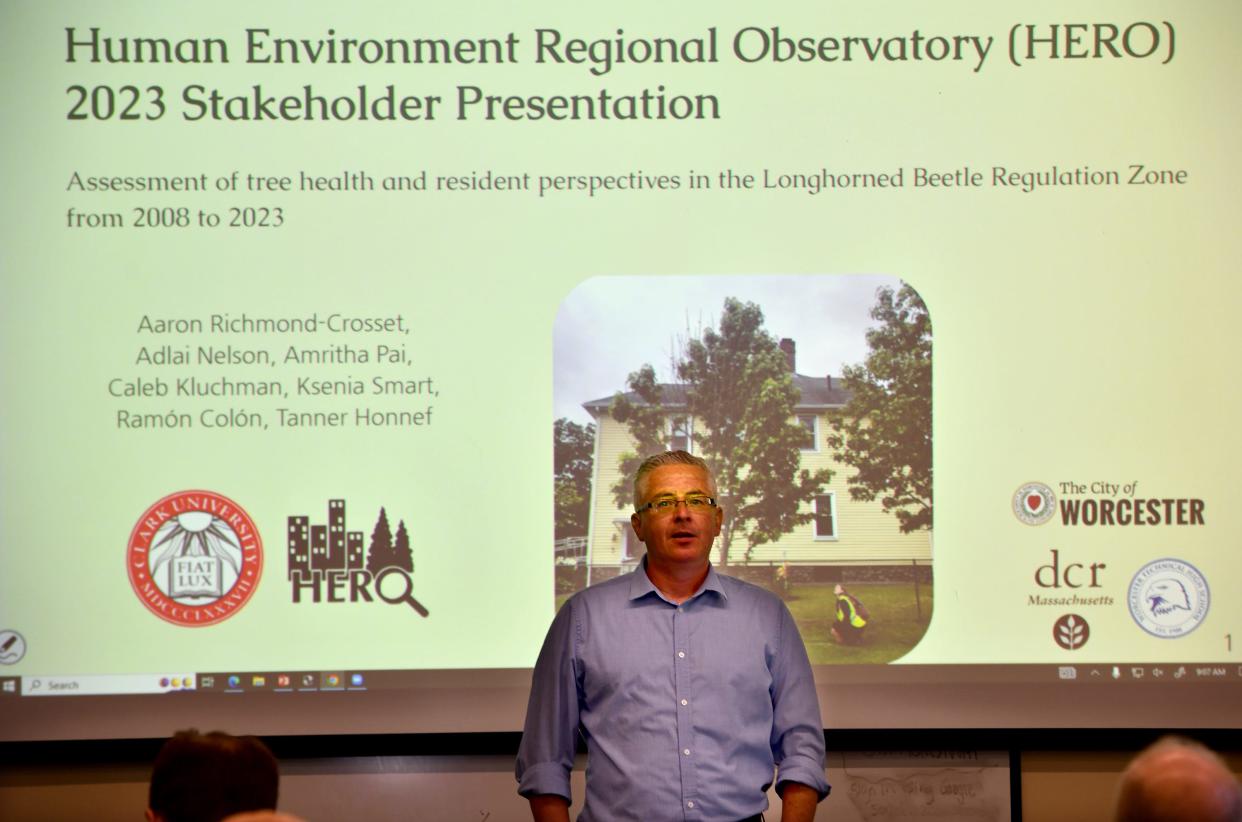Why did Central Mass. feel the earthquake 200 miles away? Worcester experts explain

WORCESTER – Sara Mitchell was oblivious to Friday’s earthquake.
“Super disappointed” is how the geosciences professor at the College of the Holy Cross described her morning when the quake hit Northern New Jersey. It caused some areas in Southern New England, including Worcester, located more than 200 miles north of the epicenter in Whitehouse Station, New Jersey, to shake and rattle.
Maybe not roll.
“I was talking with a student. I didn't notice anything,” said Mitchell, while some of her colleagues had classroom projectors that shook.
John Rogan, a Clark University geography professor, is another one who didn’t notice the quake. But the news spread fast, and Rogan called the 4.8 magnitude quake “extremely rare” for this part of the country. According to Rogan’s research, the last earthquake of this magnitude in a similar area of New Jersey happened way back in the 1770s.
So why did it happen?
Mitchell explained the area of Friday’s quake is on an ancient fault line. The Earth’s crust responded to broad stresses, and the area of the epicenter happened to be a weak spot.
"It’s different from areas of frequent earthquakes like California, where plates are shifting against each other. Earthquakes are common in those locations,” said Mitchell.
If you’re looking for an undisputed answer as to why, we may never know. “It’s related to fault lines that are occasionally active, but it’s hard for anyone to know why this one was active,” said Rogan.
Why the shaking 200-plus miles away?
It's all about the rocks.
In the Northeast, underground rocks tend to be solid, and that means seismic waves travel more efficiently through them, said Mitchell.
On the West Coast, it's a different story. Underground rocks are more broken up, so it’s harder for seismic waves to move through them. As a result, a 4.8 magnitude earthquake will be felt further away from the epicenter in the Northeast compared to the West Coast, according to Mitchell.
Rogan noted a 4.8 quake is just below the magnitude that causes building damage. It’s nothing like Wednesday’s 7.4 magnitude quake in Taiwan that killed at least 12 people and injured more than 1,000.
He also pointed out that low- to medium-level earthquakes send shock waves that radiate through the crust in a circular pattern from the epicenter. While a 4.8 quake can be felt many miles away, smaller quakes that happen all the time are never felt because they’re on the lower end of the Richter scale, measuring 1 to 1.5.
Can we expect another one — or two?
Whether you felt Friday's quake, there's a lingering question — are more earthquakes headed for the Northeast?
Rogan knows all about these Earth shakers. He used to live in a rural part of Santa Barbara, California, where earthquakes caused shelves to rattle and the ground to shake. When asked if we’re going to see more quakes like Friday’s, Rogan said bigger ones tend to have aftershocks, with tremors over a few days.
“With earthquakes of this magnitude, sometimes there are aftershocks. Whether 4.8 occurs again comes down to random elements," said Rogan. "(The Northeast) is not an active zone historically for active earthquakes."
One thing Rogan and Mitchell can agree on is earthquakes, especially those of the 4.8 variety, are rare in the Northeast. But there's a caveat.
“They’re uncommon, but not unheard of,” said Mitchell.
Contact Henry Schwan at henry.schwan@telegram.com. Follow him on X: @henrytelegram.
This article originally appeared on Telegram & Gazette: Earthquake explainer: Why was it felt in Central Mass., 200 miles away?

